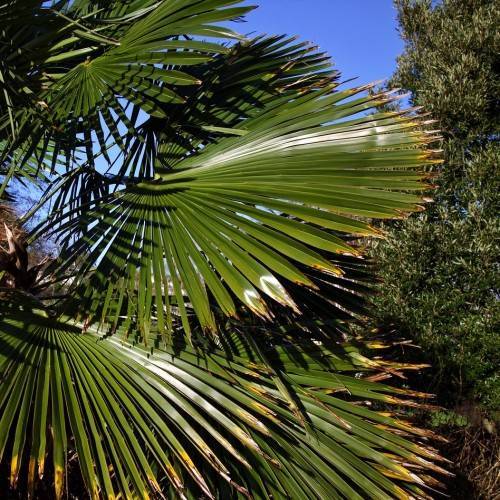
windmill palm
Trachycarpus fortunei
Also Known As - Chusan palmCycle:
Perennial
Watering:
Average
Hardiness Zone:
7 - 10
Flowers:
Flowers In Summer
Sun:
full sun,part sun/part shade
Fruits:
Fruits In Summer Ready In
Leaf:
Yes
Growth Rate:
Moderate
Maintenance:
High
Drought Tolerant:
Yes
Tropical:
Yes
Care Level:
Medium
watering
The amount and frequency of watering a windmill palm (Trachycarpus fortunei) will depend on the season and the environment in which it is growing. During the summer months, water the plant deeply once or twice a week, allowing the soil to dry out slightly between waterings. During the winter months, water the plant just enough to keep the soil moist, but not soaked. It is important to water windmill palms evenly to reduce the risk of leaf browning. In areas with extreme heat or periods of drought, additional water may be needed for the windmill palm to stay healthy and to help prevent leaf scorching.
sunlight
Windmill palms should be placed near a sunny window, and preferably in a south- or west-facing room to ensure the highest levels of light. The palm should receive at least 4 hours of intense sun a day during the warmer months (April to September). However, in the cooler months (October to March) the plant needs only 2 hours of sunlight per day due to the cooler temperatures.
pruning
Windmill palm, or Trachycarpus fortunei, should be pruned in the late spring or early summer, when the palm is actively growing. Pruning should be minimal and should mainly focus on removing dead or battered leaves and inflorescences (flower clusters). Pruning should consist of cutting off the entire fan of leaves with the stem or cutting back the leaves to their base stems. It is important to use sharp pruners or loppers to prevent the spread of infection and disease.
